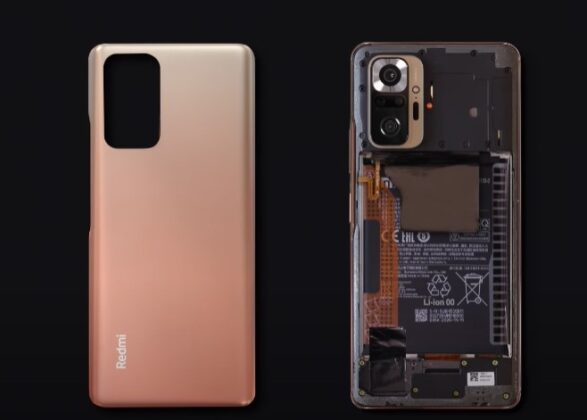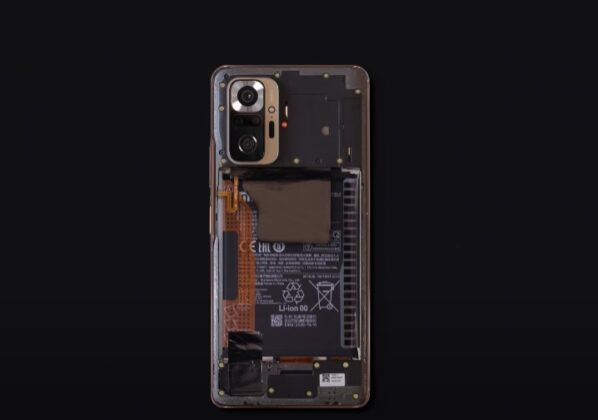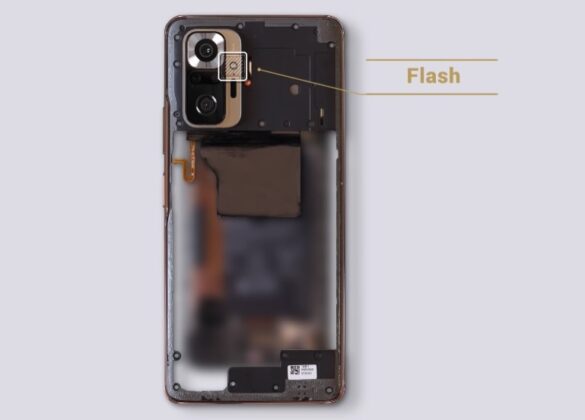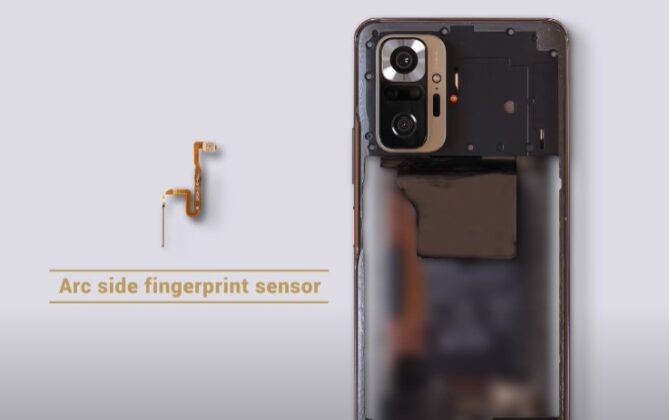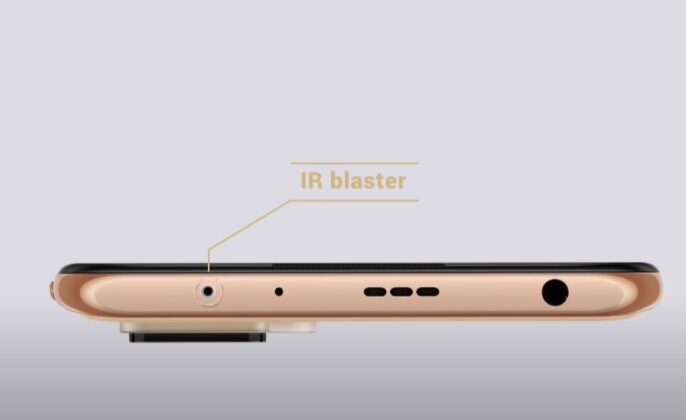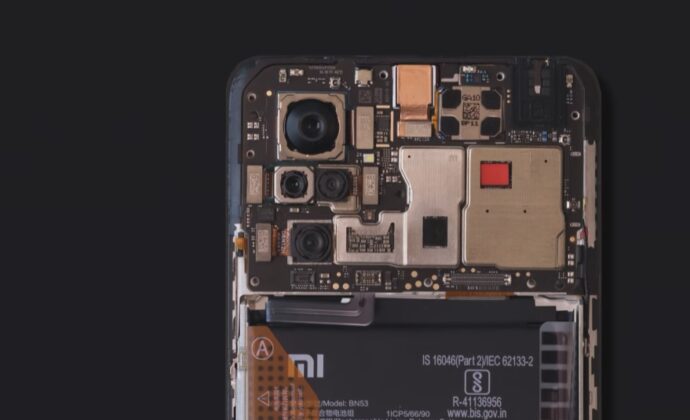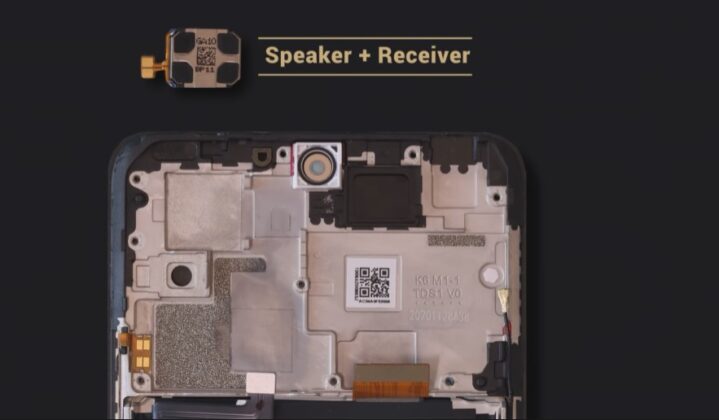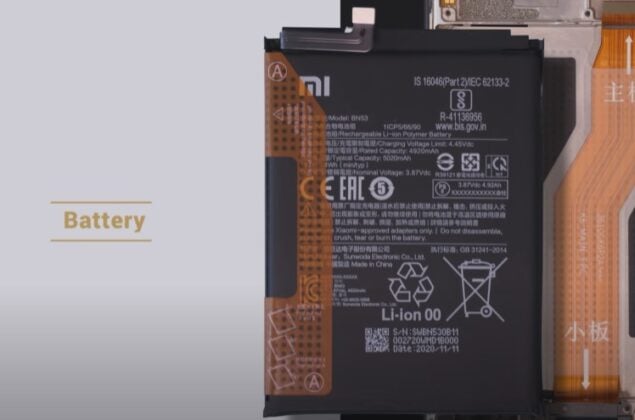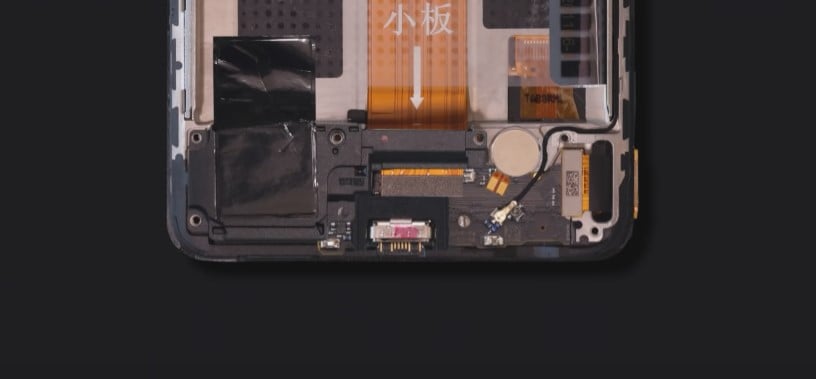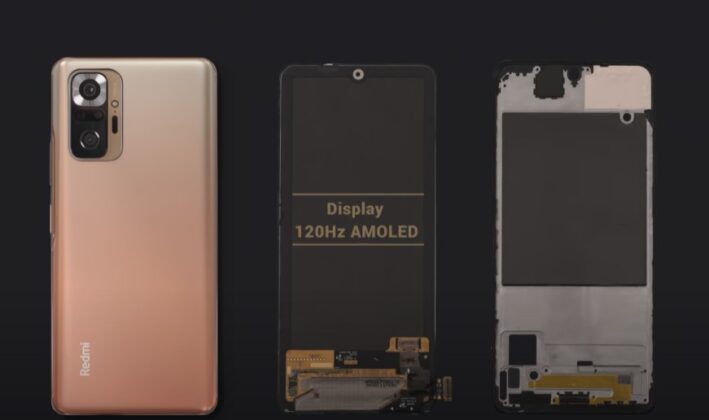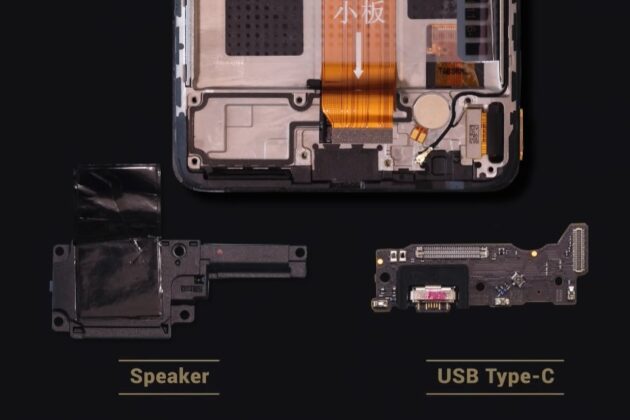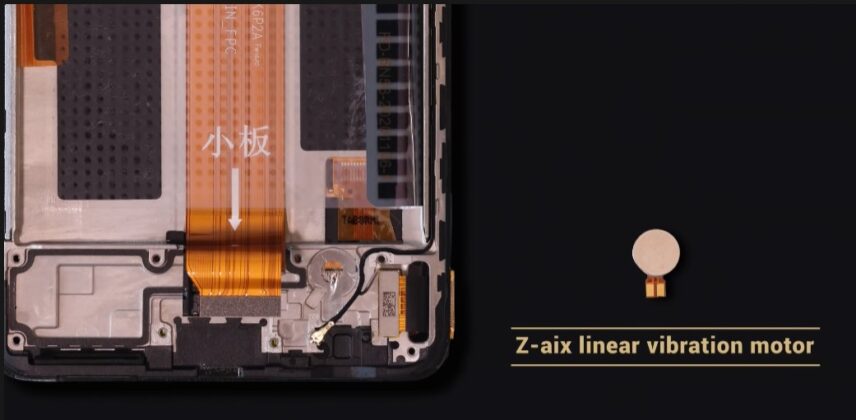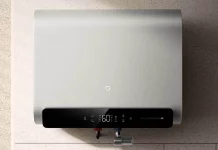Xiaomi launched the Redmi Note 10 series in India and other Global markets on March 4. The sales of the devices are expected to begin Globally in a couple of days and from March 16 in India. Ahead of this, Xiaomi has released an official teardown of the Redmi Note 10 Pro/ Redmi Note 10 Pro Max.
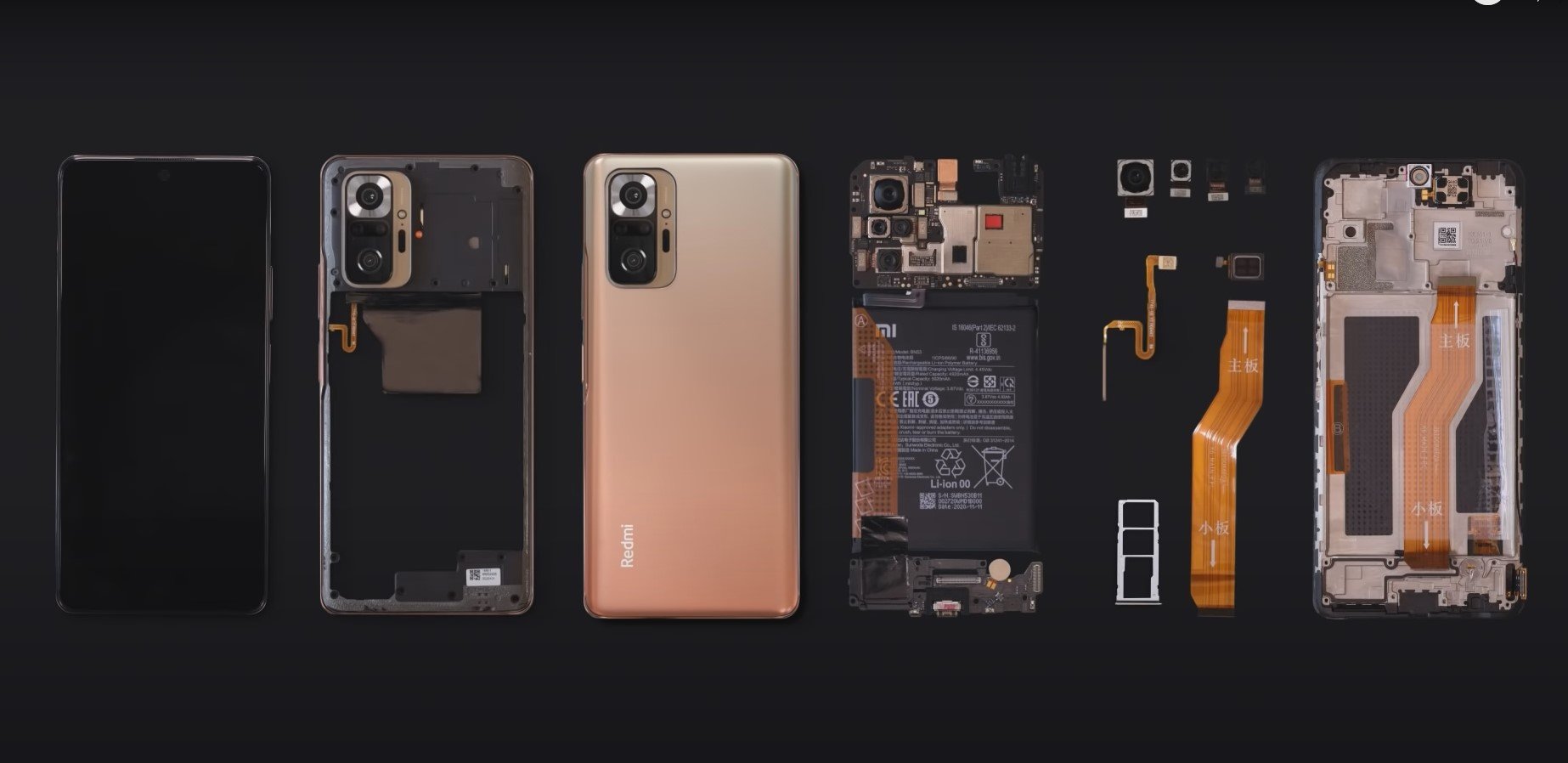
In the YouTube video, released by Xiaomi officially, the device being torn down is the Gradient Bronze variant of the Global Redmi Note 10 Pro. We already know that the device is the almost same as the Redmi Note 10 Pro Max in India.
The video begins with removing the back panel cover and showing the rear of the device. Here, we see three parts already- The top portion with processor, storage, camera, one of the dual speakers, battery at the center, and the bottom part.
First, the top inside portion of the rear panel that has the camera and CPU cover, along with the side frame is removed. This also has the connection to the Arc side-fingerprint sensor. As we all know, the LED Flash is beside the camera setup and here, it looks like Xiaomi has soldered it onto the motherboard.
Moving on, we see the huge 108MP Samsung HM2 sensor along with ultra-wide, Telemacro, and depth sensor. Do note that all of them are placed separately and not as a single module. The top portion also has IR blaster, 3.5mm audio jack.
At the center resides the single 16MP selfie camera which is revealed by turning the top portion of the arrangement. Speaking of which, the inverted top portion shows the CPU, LPDDR4x RAM, covered in metal plate, and SIM card tray.
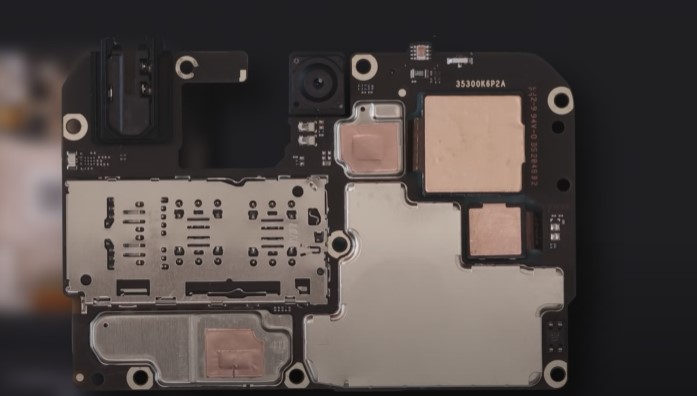
Also, one of the Stereo speakers/receiving unit is actually fixed to the mid-frame and not the top portion we saw above. After, this, decoupling the battery from the center position shows us the manufacturer in detail. The rated 4,920mAh/Typical 5,020mAh Li-ion Polymer battery is made by China’s Sunwoda Electronics Co Ltd.,
Last but not the least, we see the display and the bottom portion. Here, the bottom port has the other speaker, Type-C port, Z-Axis linear vibration motor, and is connected via a long ribbon cable to the motherboard.
RELATED:

